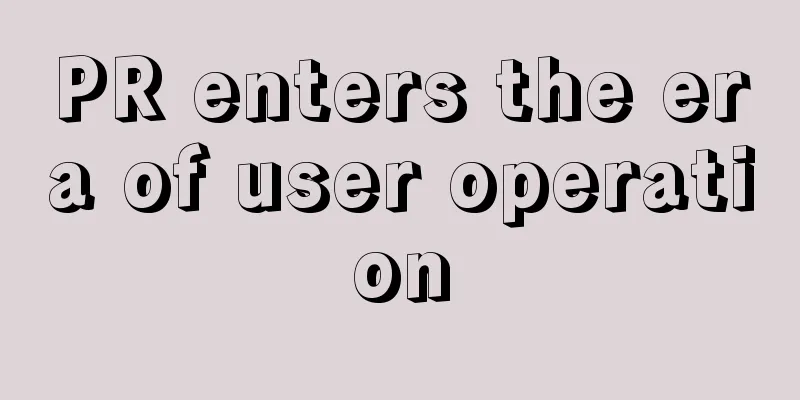These three models are super useful for Internet product analysis!

Internet product (APP, mini program, H5, web page) analysis is very common, and it is also difficult for many students to understand. Every time, they list a bunch of DAU/MAU, open rate, bounce rate, conversion rate data, but it is difficult to draw a conclusion. Then the leader will criticize it as "the analysis is not in-depth enough". The reason for this problem is: not understanding the analysis goals of Internet products. If you only list data without combining them with goals, you will definitely not be able to draw conclusions. And the goals are closely related to the product type. Today, I will systematically explain the types of Internet products and the basic analysis models for each type. 1. Three major types of Internet productsThere are many ways to classify Internet products, but from the perspective of "what the product does", there are only three major categories:
Of course, there are many subcategories under the major categories, such as: 1. Trading productsDepending on the items traded, it can be further subdivided into two categories: goods and services. Since specific goods have their own characteristics in production and delivery, they can be further subdivided into many distinctive subcategories such as games, finance, consumer goods, and durable goods. Each subcategory will make functional modifications to better facilitate transactions in its own category, such as: To improve the game's trading, it is necessary to add PK competitions, new maps/skins/props, honorary titles/rankings, etc. In order to improve transactions, finance needs to collect personal credit information (mobile phone number, ID card, car, house, education). In order to increase transactions, lO2O will provide different types of merchants for consumers to choose from. Therefore, to understand the functions of transactional products, we can think from two perspectives: "How to increase transaction willingness" and "How to reduce merchant transaction risks". 2. Content-based productsBased on the different content forms, it can be divided into short, medium and long videos, pictures and texts, and voice. Under each category, there are also differences in subject matter, such as: news, novels, entertainment, emotions... Based on the different content providers, it can be divided into PGC (Professional Generated Content)/UGC (User Generated Content). It should be noted that after years of development, different types of content have formed their own unique ecosystems with relatively fixed content ranges. For example, short videos focus on dressing up, dancing, and editing; medium videos focus on variety shows and entertainment programs; long videos focus on broadcasting of copyrighted film and television dramas; once these ecosystems are formed, they will have independent operating systems, so they cannot be mixed together, and each category needs to be understood separately. 3. Tool-based productsThere is a clear difference between B-end products and C-end products. B-end products are often divided according to the business operation work links, often divided into front desk (facing customers), middle desk (facing marketing/operation/product managers), and back desk (facing the supply chain). On the C-end, there are many different types of tools, such as fitness/maps/weather/input methods/antivirus. These tools often have specific scenarios, such as construction/checking the weather/typing/antivirus, and these tool-type products do not sell a specific product, most of them are basic tools. The only exception is social tools (such as WeChat, Momo, and Soul). Since social tools have their own traffic, it is difficult for users to leave once they establish social relationships in the tools. Therefore, they are naturally traffic-generating and often become tools for diverting traffic to other products. The above is the basic classification of products. If it is too difficult for novice students to distinguish them, you can simply remember the classification chart above and match them to the corresponding ones. 2. Understanding the main indicators of product analysisThe main purpose of understanding product types is to: clarify the main indicators of the product. In general: Transactional products have the core goal of facilitating transactions. Therefore, we focus on GMV (Gross Merchandise Volume) and the conversion rate of the entire transaction process from promotion to transaction. Content-based products adhere to the concept of "activity is justice". Advertising is the main source of income for these platforms, so as long as users are willing to browse content, there is an opportunity to sell various advertisements. Therefore, the activity rate is the core indicator of concern, and unlike transaction-based products, it does not pay special attention to the transaction situation. There are two typical models for tool-type products, depending on the degree of functional demand/monetization ideas. One type is common in C-end products, which use themselves as traffic entrances to divert traffic to other products. In this model, either monetization is not considered or advertising is used for monetization. This model is very similar to content-based products. In essence, it uses itself as a traffic source, so the main indicators to consider are also the same as content-based products. The other type is common in B-end products. Because B-end products have historically required payment (and they are very expensive), B-end charges are often justified, but the payment methods are different. Some are paid by license, some are paid by project implementation. Some are locally deployed, and some are delivered in SaaS form. Its main indicators are the traditional software sales considerations: number of customers, conversion rate, and average order value. Understanding the main indicators of the product is mainly to solve the problem of "empty columns of DAU and conversion rate but no conclusion". To evaluate the quality of a product function, it is essentially to see whether it contributes to the main indicators of the product. If there is no contribution, or even a negative contribution, then even if the function itself is cool, it is problematic. 3. Three basic analysis modelsAfter understanding the product classification and main product indicators, you can take a further look at the basic analysis model. 1. Transactional Product Funnel ModelThe goal of transactional products is to increase transactions, but different paths lead to different transaction efficiencies, so the funnel model is very suitable (as shown below): If it is direct traffic from outside the site, it is a pure funnel model, and you only need to examine the conversion rate of each funnel. If you are distributing traffic within the site, you need to pay attention to whether there is a traffic squeeze between various forms. In principle, more traffic should be allocated to channels with high conversion rates, but you cannot simply look at "whichever channel has high conversion, all the traffic should be given to it." Because a certain function may have its own specific interest group, it is necessary to examine the efficiency of traffic distribution as a combination. 2. Segmentation model for content-based productsIn theory, content-based products can also use a similar funnel model to observe whether users are willing to complete a content browsing, and whether they forward, like, purchase, etc. after browsing the content (as shown in the figure below). But please note that in content-based products, a user's browsing behavior is often short and scattered. Each time a user logs in, they will perform a combination of behaviors (first look at this, then look at that). Therefore, it is necessary to group users and distinguish between light, medium and heavy users based on the length of time/frequency. Then, look at different product functions to see how to satisfy different types of users: 3. Tool-based productsTool-type products need to be differentiated into different types. For C-end traffic entry products, we can draw on the ideas of content-type products and conduct segmentation analysis. For B-end products, special attention should be paid to the fact that the actual user experience of B-end products is separated from the user's payment. Because B-end products often have a bidding process, how to pass the layers of assessment and win the bid is the key in the bidding process. At this time, product analysis essentially analyzes the success rate in the sales process (as shown in the figure below). Note that the above is only a basic analysis model, and the actual analysis will be more complicated. This is because product analysis is also divided into strategic, tactical, and combat levels. Different levels of analysis serve different groups of people and have different goals. Writing conversion rate, click-through rate, and usage time indiscriminately will definitely not meet the needs. Author: Down-to-earth Teacher Chen WeChat public account: Down-to-earth Teacher Chen (ID: gh_abf29df6ada8) |
<<: Earn an extra 5,000 per month by writing headlines with this system!
>>: Are you in the money-making department or the money-burning department?
Recommend
Can e-commerce conversion rates be viewed in this way?
In today's digital age, e-commerce has become ...
Scam or opportunity? Uncovering the truth about digital human live streaming
In recent years, AI has been widely used in all wa...
What level of thinking ability is you at?
This article introduces the four levels of thinkin...
Can Chinese restaurants learn from Saizeriya’s low prices?
Saizeriya has become popular in China with its low...
5700+ words to analyze how the online education industry builds private domain operation processes? Understanding this point can improve performance by 50%
How to build a private domain operation process fo...
In 2025, the more local businesses are, the more they need to promote themselves.
In 2025, local businesses will face more intense m...
Is advertising the only thing that can save Bilibili?
Based on Bilibili’s key commercialization moves, t...
Why are Amazon orders always cancelled? How to increase order volume?
As Internet shopping becomes more and more popular...
Can Amazon stores be closed? Why can’t stores be run successfully?
On the platform of Amazon, a global e-commerce gia...
What are Amazon's compliance policies? What should I follow?
If you open a store on Amazon, you need to abide b...
What are the consequences of Lazada’s incorrect pricing? What should I do if Lazada has incorrect pricing?
No matter what platform you open a store on, merch...
Is it a new opportunity to make money by selling goods on public accounts, video accounts and small stores?
Recently, WeChat announced that public accounts ca...
Xiaohongshu's spotlight advertising didn't convert? Remember these 15 operational experiences
Many brands have encountered the problem of low co...
"Omni-channel" and "one-stop product management" in new retail
In the wave of new retail business, "omni-cha...
How long does it take to cancel a Shopee promotion? How to participate in the event?
Some seller friends operate their stores by partic...









